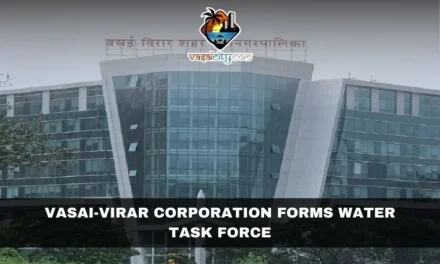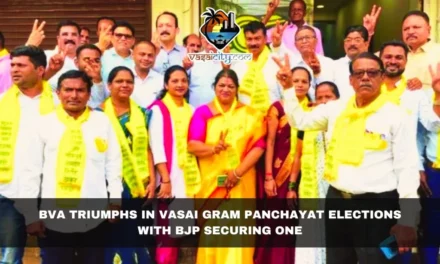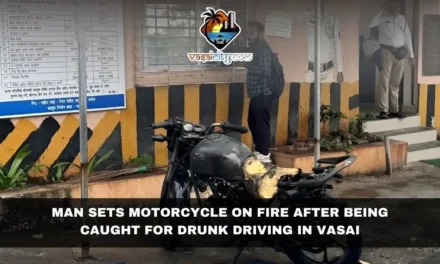In a recent turn of events, the Maharashtra Navnirman Sena (MNS) made headlines when they organized a protest in Virar. Their gripe? The long-overdue inauguration of the Surya Regional Water Supply Scheme, a project that promises to bring a much-needed 185 million liters of water per day to the Vasai region.
This protest, which unfolded on a Friday, attracted quite a bit of attention, primarily because Sharmila Thackeray, the wife of MNS chief Raj Thackeray, took an active role in the demonstration. She made a bold claim, stating that the project has been sitting, fully prepared for inauguration, for a staggering five months. The hold-up? They were awaiting Prime Minister Narendra Modi’s presence at the inauguration.
Ms. Thackeray offered a solution in her impassioned plea. She suggested that, if it was impossible for the Prime Minister to attend the event physically, he should, at the very least, consider inaugurating it virtually. She underscored the fact that the region’s residents have been grappling with a severe water shortage for over a week, and the seemingly interminable delay in this project has left the local population parched and anxious.
To put this situation into perspective, let’s delve into the details of the Surya Regional Water Supply Scheme. The project was completed in June, and its aim was to deliver 100 million liters of water per day to the Vasai region in its initial phase. Despite having a daily supply capacity of 230 million liters, residents were still facing shortages amounting to over 140 million liters, causing water scarcity that persisted for days.
This crucial project fell under the management of the Mumbai Metropolitan Region Development Authority (MMRDA), which was determined to provide substantial water resources to the Vasai region as well as Mira-Bhayander. The scheme’s workings entail drawing raw water from the Kawadas pickup weir, a location situated downstream of the Surya dam in Dahanu taluka. This raw water is then conveyed to the water treatment plant located in Surya Nagar, situated within Veti village.
The people residing in the region had been at the end of their tether for quite some time, and numerous protests had erupted over the delay in releasing water from the Surya project. Notably, Palghar MP Rajendra Gavit had even met with Chief Minister Eknath Shinde to make a direct plea for the project’s inauguration. There were rumors that Prime Minister Modi might grace the occasion with his presence during his visit to Navi Mumbai on October 30, which coincided with the inauguration of the Navi Mumbai metro. Unfortunately, this event has been postponed to the following month.
The situation in Virar and the surrounding region serves as a poignant reminder of the critical importance of timely infrastructure projects, especially those related to water supply. In a country where water scarcity is a persistent concern, any delay in such projects can have dire consequences. The frustration and urgency expressed by Sharmila Thackeray and the MNS protestors are emblematic of the very real struggles that communities face when essential services are not delivered promptly.
With the completion of the Surya Regional Water Supply Scheme in June, there was hope for a brighter future in terms of water availability in the Vasai region. However, as the days turned into weeks and then months, that hope began to fade. The residents found themselves caught in a tough situation, where promises seemed empty, and the challenges of their daily lives mounted.
While it’s clear that the delay in the inauguration of this project is a matter of great concern, it is also essential to understand the complexities that might be contributing to this situation. Infrastructure projects of this magnitude often involve a web of administrative, logistical, and political factors that can slow down progress. In this case, the wait for the Prime Minister’s participation, as claimed by Sharmila Thackeray, was a significant reason for the hold-up.
Sharmila’s plea for a virtual inauguration brings up an interesting point – in the age of technology, should the physical presence of a leader be a prerequisite for inaugurating essential projects? In a world where virtual communication has become the norm, it’s a valid question to consider. After all, the primary objective of inaugurating such projects is to ensure they begin serving the people they were designed for. If virtual inaugurations can expedite the process and alleviate the suffering of communities, perhaps it’s a step in the right direction.
The Surya Regional Water Supply Scheme was designed to be a game-changer for the Vasai region. The promise of 100 million liters of water per day could have significantly improved the lives of the residents, and it was a beacon of hope in a region where water scarcity had become a common and crippling problem. It was an ambitious project, and its completion was supposed to be a turning point for the people who had suffered through water shortages for far too long.
The fact that, despite its capacity to provide 230 million liters of water daily, residents were still grappling with a deficit of over 140 million liters showcases the magnitude of the water crisis in the region. It’s a stark reminder that a project on paper is only as good as its practical implementation. In this case, even though the project existed on paper, its real impact was far from what the residents had hoped for.
In Virar and surrounding areas, the delay in essential projects like the Surya Water Project emphasizes the need for timely infrastructure development, especially in regions where water scarcity is a persistent concern. While challenges and delays are part of large-scale projects, it is crucial to prioritize the well-being of communities and ensure that projects that promise to improve their lives are delivered promptly. Water is not just a commodity; it’s a fundamental human right, and it is essential to address the concerns of communities that have been suffering due to its scarcity.








